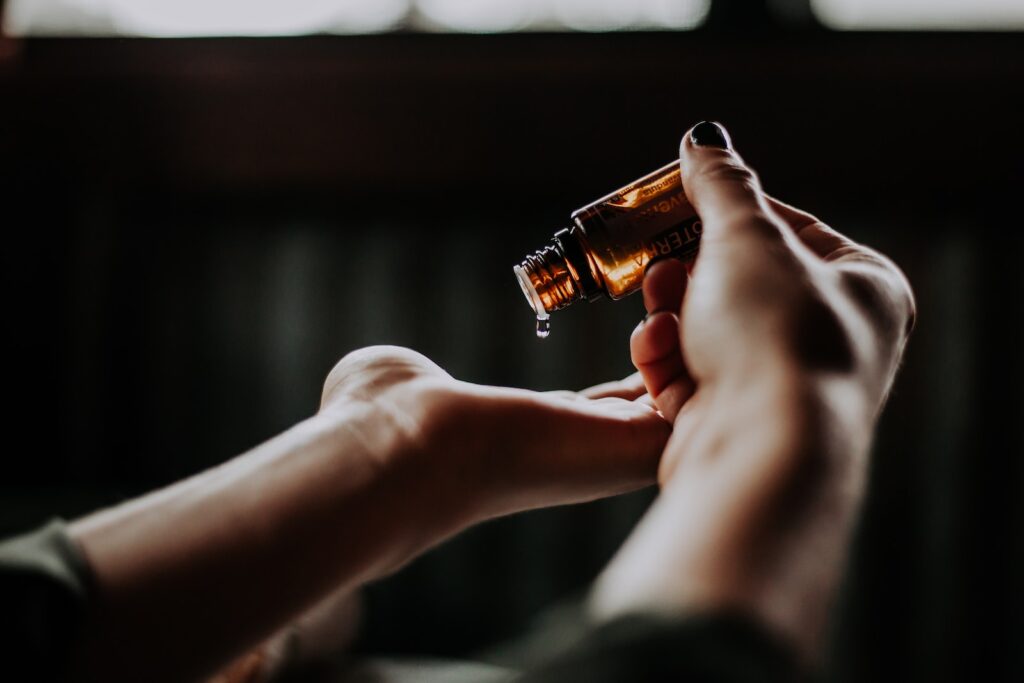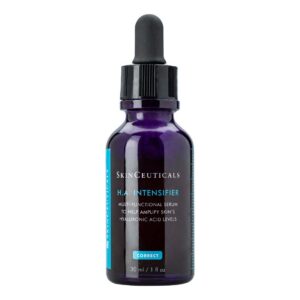
Mandelic Acid: Top 5 Product Recommendations
Understanding Mandelic Acid
Have you heard of Mandelic Acid? Let’s talk about this lesser-known but oh-so-powerful skin acid. Mandelic acid is an alpha hydroxy acid (AHA) generated from bitter almonds. It has one of the largest particle sizes among its fellow AHAs, including glycolic and lactic acids, which enables it to enter skin more slowly, uniformly, and superficially. Additionally, it lingers on the skin’s surface for a longer period of time. Therefore, it is less likely to irritate skin, even in people with sensitive skin and darker skin tones. (But be sure to test a small area first before committing to a full face.)
This special acid is an excellent choice for those with darker complexions because it isn’t melanotoxic. This means it won’t kill melanocytes and won’t exacerbate discoloration. Instead, it decreases the appearance of dark spots due to acne and sun exposure, in all the right ways. According to dermatologists, mandelic acid peels are considered well-tolerated in patients with darker skin tones, with less risk of hyperpigmentation, photosensitivity, and scarring compared to other acids such as glycolic acid.
Despite its larger particle size, mandelic acid also delves deeper into the skin than other AHAs because it’s oil-soluble. As opposed to glycolic and lactic acids, which are water-soluble, so they work only on the top layers of skin.

The Benefits of Mandelic Acid for Skin

This amazing acid has powerful antibacterial properties along with gentle exfoliating and cell-turnover-activating abilities that work together to get rid of acne, improve dull skin, uneven texture, hyperpigmentation, and fine lines and wrinkles.
It does the latter by boosting collagen production, too (Love this!). People report noticing smoother, brighter, and plumper skin after about one to three weeks of use.
A downside of mandelic acid is that you can’t layer it on your face at the same time as your retinol. This can create redness, sensitivity, and excessive dryness. You can avoid this by alternating the days you implement them into your nighttime skin-care routine. Also, if you’re allergic to almonds, you may want to avoid this acid in your skincare routine.

What it Does
- Gentle Exfoliation Mandelic Acid offers the best of both worlds: effective exfoliation without the harshness. This makes it a fantastic option for individuals with sensitive skin who have previously shied away from exfoliation.
- Treatment of Acne and Blemishes Thanks to its antibacterial properties, Mandelic Acid helps combat acne-causing bacteria. It also aids in unclogging pores and reducing the appearance of blemishes.
- Skin Brightening and Even-Tone Mandelic Acid inhibits the production of melanin, making it a potent ally in the fight against hyperpigmentation, dark spots, and uneven skin tone.
- Anti-Aging Effects By stimulating collagen production and promoting cell turnover, Mandelic Acid helps minimize the appearance of fine lines and wrinkles, giving your skin a youthful glow.
Incorporating Mandelic Acid into Your Skincare Routine
- Patch Testing and Sensitivity Before diving headfirst into a new skincare ingredient, it’s essential to perform a patch test to gauge your skin’s sensitivity and tolerance.
- Choosing the Right Product From serums to toners to peels, Mandelic Acid can be found in various formulations. It’s crucial to choose a product with an appropriate concentration based on your skin’s needs.
- Frequency and Timing Start slow to avoid over-exfoliation. Begin with a low application frequency, preferably at night, and gradually increase as your skin adapts.
Potential Side Effects and Precautions
Photosensitivity As with many exfoliating ingredients, Mandelic Acid can increase your skin’s sensitivity to the sun. Sunscreen becomes non-negotiable when using this ingredient.
Irritation and Redness While Mandelic Acid is gentle, some initial redness and irritation might occur as your skin adjusts. However, this should subside with time.
Interaction with other Skincare Ingredients Pay attention to your skincare routine as Mandelic Acid may interact with certain ingredients. Consult a dermatologist if you’re unsure.
Importance of Sun Protection We can’t stress this enough: sunscreen is your skin’s best friend when using any exfoliating product.
Mandelic Acid vs. Other Chemical Exfoliants
Comparing Mandelic Acid with Glycolic Acid Mandelic Acid’s larger molecular size gives it an edge in terms of gentleness. Glycolic Acid might be more effective for some, but it can be harsher on sensitive skin.
Mandelic Acid vs. Salicylic Acid While Salicylic Acid dives deep into pores to tackle oil and acne, Mandelic Acid’s antibacterial properties make it a formidable opponent in the fight against breakouts.
Mandelic Acid vs. Retinol The choice between Mandelic Acid and Retinol hinges on your skincare goals and skin type. Mandelic Acid, suitable for sensitive skin, targets hyperpigmentation and acne with its gentle exfoliation and antibacterial properties. On the other hand, Retinol excels in combating aging concerns by boosting collagen production and refining skin texture. It’s important to consider your sensitivity, objectives, and potential for combining these ingredients. It’s important to consult a skincare professional for tailored advice based on your skin’s unique needs.
Safety and Efficacy Considerations Always remember that what works for one person may not work for another. Listen to your skin and make informed decisions.
Top 5 Product Recommendations:
- The Ordinary Mandelic Acid 10% + HA 1 oz/ 30 mL
- Naturium Mandelic Topical Acid 12%, Plus Niacinamide & Natural Fruit Acids
Research and Expert Recommendations
Comparative study of efficacy and safety of 45% mandelic acid versus 30% salicylic acid peels in mild-to-moderate acne vulgaris
Summary of Mandelic Acid for the Improvement of Skin Conditions
Mandelic acid on the skin: What to know
To Sum It Up
Mandelic Acid is certainly a versatile yet gentle exfoliant that is backed by convincing scientific research, which can address a range of skincare concerns.
You May Also Enjoy: The Ultimate Guide To Skin Acids









